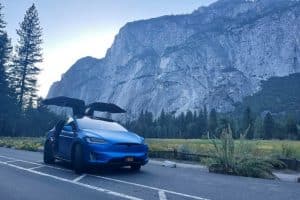Key Takeaways
- Elon Musk remains optimistic about Tesla solving Full Self-Driving by 2025.
- The 2025 timeline marks a shift from the frequent “end of this year” promises seen in prior years.
- Recent versions of Tesla’s Full Self-Driving are noted for impressive performance in complex driving scenarios.
- Tesla is emphasizing the development of a Robotaxi fleet to advance its self-driving technology.
- Tesla’s official account on X suggested future cars might drive themselves home, reinforcing Musk’s confidence.
- The initial release of Full Self-Driving is expected to be limited to certain cities, particularly in Texas and California.
- Tesla has taken regulatory steps in preparation for the rollout of their self-driving features.
- Missing the self-imposed 2025 deadline could be detrimental, making this timeline crucial for Tesla’s strategic plans.
In the constantly evolving world of technology and innovation, few figures stand out as much as Elon Musk, whose vision for Tesla extends beyond electric vehicles to a future dominated by autonomous driving. For years, Musk has promised the arrival of Full Self-Driving (FSD) capabilities, occasionally veering on the side of over-enthusiasm. However, the bold new timeline marking 2025 as the target year for achieving true self-driving prowess signals a renewed commitment from Tesla. In this blog post, we delve deep into the factors contributing to this ambitious goal and what it means for the industry, Tesla, and consumers.
Renewed Optimism: The 2025 Vision
Tesla’s journey toward Full Self-Driving has been punctuated by yearly targets that have come and gone with limited achievement. However, the promise of 2025 reflects a more tangible vision, influenced by recent advancements in technology and regulatory progress.
Why 2025?
- Technological Advancements: Recent iterations of Tesla’s FSD software have shown remarkable improvements in handling complex driving scenarios, a critical factor in ensuring safety and reliability in autonomous systems.
- Regulatory Developments: Tesla’s proactive approach in getting regulatory approval, particularly in key states like Texas and California, positions it well for a smoother rollout.
- Robotaxi Fleet Initiative: Central to Tesla’s plan is the development of a Robotaxi fleet—vehicles equipped with the latest FSD capabilities, designed to showcase Tesla’s autonomy lead and generate substantial revenue streams.
The Role of Recent FSD Versions
Tesla’s advancements in FSD encompass not just hardware improvements but also significant software leaps. Recent software updates have been particularly noteworthy for their performance in navigating challenging situations:
- Human-like Decision Making: The ability to make split-second decisions comparable to human drivers makes these systems stand out.
- Handling Complex Urban Environments: From busy intersections to pedestrian zones, the latest versions demonstrate significant enhancements.
Potential Challenges and Opportunities
While the vision is alluring, there are inherent challenges that Tesla must navigate:
- Regulatory Hurdles: Despite progress, the regulatory landscape for autonomous vehicles remains a patchwork of state and federal laws.
- Public Perception and Trust: Building consumer trust is crucial, as drivers need assurances of safety and reliability before replacing human-driven cars with FSD vehicles.
- Deadline Pressure: Achieving the 2025 deadline is not just about maintaining competitive edge but also about delivering on investor and customer expectations. Missing this timeline could pose reputational risks.
The Strategic Importance of 2025
For Tesla, the 2025 target is more than just a goal; it’s a linchpin for broader strategic initiatives. The successful deployment of a fully functional self-driving system could:
- Revolutionize Urban Transportation: By easing congestion and optimizing traffic flow through Robotaxi networks.
- Solidify Tesla’s Industry Leadership: Positioning the company ahead of competitors in the burgeoning autonomous vehicle market.
- Enhance Investor Confidence: By aligning the 2025 target with growth projections, Tesla aims to sustain investor enthusiasm and market share.
The road to Full Self-Driving is riddled with challenges, but Tesla’s commitment to a 2025 rollout marks a significant milestone in the broader narrative of autonomous vehicle development. Whether Tesla manages to wholly fulfill its ambitious vision remains to be seen, yet the journey there promises significant innovation and transformation in the automotive industry.





